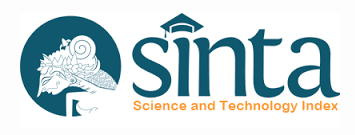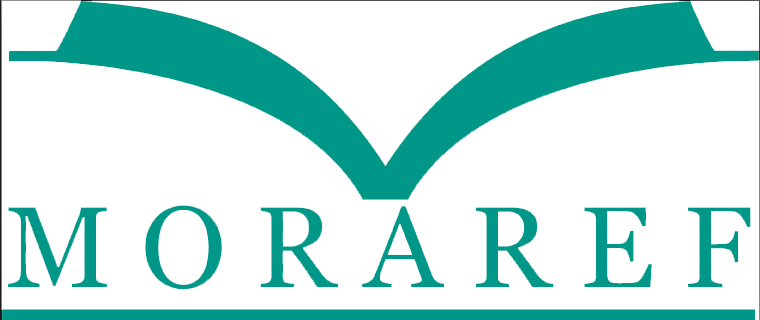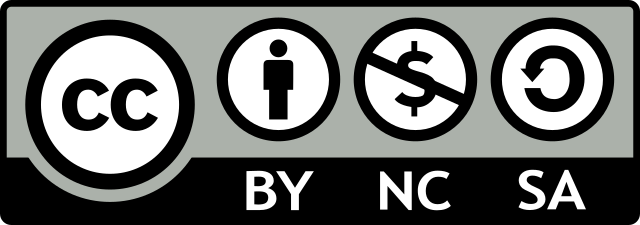Analisis Tingkat Kemampuan Literasi Digital pada Generasi Z di Kabupaten Sleman dalam Melakukan Transaksi di Shopee
Abstract
The purpose of this study is to analyze the level of digital literacy among Generation Z in Sleman Regency in conducting transactions on Shopee. This research uses a descriptive quantitative approach with a purposive sampling technique. Data collection techniques come from primary data obtained through distributing questionnaires to 100 respondents, complemented by literature reviews and interviews to strengthen the evidence. The respondents of this study are Generation Z in Sleman Regency. The research findings reveal that the ability of Generation Z in Sleman Regency to use and disseminate information falls into the moderate category, accounting for 87%. The ability to create and collaborate is also in the moderate category, with 48%. The ability to analyze and evaluate falls into the high category, at 45%. Meanwhile, the ability to apply ethical judgment is categorized as moderate, with 93%. Overall, across the four core digital literacy skills, the majority of Generation Z in Sleman Regency who have conducted transactions on Shopee are categorized as moderate, representing 55%. This indicates that most Generation Z in Sleman Regency have fairly good digital literacy, although there remains a small portion with low digital literacy. Therefore, efforts to enhance digital literacy among Generation Z in Sleman Regency are still needed, as increased digital literacy is expected to improve security and awareness in using and optimizing digital platforms.
Downloads
References
Annur, C. (2022). Platform E-commerce yang Digunakan Responden untuk Berbelanja (Maret 2022). Retrieved from Katadata Media Network website: https://databoks.katadata.co.id/datapublish/2022/06/28/e-commerce-terpopuler-di-kalangan-anak-muda-siapa-juaranya
Annur, C. (2023). Penetrasi Internet Indonesia Peringkat ke-8 di ASEAN, Siapa Teratas? Retrieved September 6, 2023, from Katadata Media Network website: https://databoks.katadata.co.id/datapublish/2023/09/06/penetrasi-internet-indonesia-peringkat-ke-8-di-asean-siapa-teratas
Bawden, D. (2018). Encountering on the road to Serendip? Browsing in new information environments. In Innovations in Information Retrieval. https://doi.org/10.29085/9781856049733.003
Bayu, D. (2022). Riset: Milenial Paling Banyak Belanja di E-Commerce pada 2021. Retrieved September 6, 2023, from Dataindonesia.id website: https://dataindonesia.id/digital/detail/survei-milenial-paling-banyak-belanja-di-ecommerce-pada-2021
Carlos, Y., Sutanto, T., & Soebijono, T. (2013). Rancang Bangun Sistem Informasi Penilaian Kinerja Sopir Taksi Menggunakan Metode Scoring System Pada PT. Merpati Wahana Taksi. Jurnal JSIKA, 2(2).
Dong-hyeok, S. (2017). Understanding user’s overall evaluations of online reviews: An elaboration likelihood model perspective. Computers in Human Behavior.
Gefen, D., & Straub, D. W. (2004). Consumer trust in B2C e-Commerce and the importance of social presence: Experiments in e-Products and e-Services. Omega, 32(6). https://doi.org/10.1016/j.omega.2004.01.006
Gilster, P. (1997). Digital Literacy. New York: Wiley.
Khoirul, A. (2023). Paling Rendah di ASEAN, Tingkat Literasi Digital RI Cuma 62%. Retrieved September 6, 2023, from CNBC Indonesia website: https://www.cnbcindonesia.com/tech/20230214171553-37-413790/paling-rendah-di-asean-tingkat-literasi-digital-ri-cuma-62
Kominfo. (2022). Status Literasi Digital Indonesia 2021. Katadata Insight Center.
Kurniasih, N., Hasyim, C., Wulandari, A., Setiawan, M. I., & Ahmar, A. S. (2018). Comparative Case Studies on Indonesian Higher Education Rankings. Journal of Physics: Conference Series, 954(1). https://doi.org/10.1088/1742-6596/954/1/012021
Pérez-Tornero, J. M., Paredes, O., Baena, G., Giraldo, S., Tejedor, S., & Fernández, N. (2010). Trends and models of Media literacy in Europe: Between digital competence and critical understanding. Anàlisi, (40). https://doi.org/10.7238/a.v0i40.1146
PeyHS. (2023). [Berita Foto] Kominfo Rilis Status Literasi Digital Indonesia Tahun 2022. Retrieved September 6, 2023, from KOMINFO website: https://www.kominfo.go.id/content/detail/47178/berita-foto-kominfo-rilis-status-literasi-digital-indonesia-tahun-2022/0/berita_satker
Sadya, S. (2023). APJII: Pengguna Internet Indonesia 215,63 Juta pada 2022-2023. Retrieved September 6, 2023, from Dataindonesia.id website: apjii: Pengguna Internet Indonesia 215,63 Juta pada 2022-2023%0A%0A%0A%0AArtikel ini telah tayang di Dataindonesia.id dengan judul%0A%0A%22APJII: Pengguna Internet Indonesia 215,63 Juta pada 2022-2023%22.,%0AAuthor: Sarnita Sadya.%0AEditor: Dimas Bayu.%0A
Singh, D., Choovong, L., Cheunwattana, A., Guaysuwan, P., & David, L. (2006). Development of Information Literacy through School Libraries in South-East Asian Countries. Reforming Learning,Curriculum and Pedagogy:Innovative Visions for the New Century.
Sugiyono. (2013). Metode Penelitian Kuantitatif, Kualitatif, dan R&D. Bandung: Alfabeta.
Suyanto, M. (2003). Top, Strategi Periklanan pada E-Commerce Perusahaan Dunia. PT. Elex Media Komputindo Kelompok Gramedia, Jakarta, (September).
The Ministry for Education of Maltese Island. (2015). Green Paper Digital Literacy: 21st Century Competences for Our Age. Malta: Department of eLearning.
Copyright (c) 2025 Dea Amanda Elta Kirana, Wina Erwina, Wina Erwina, Asep Saeful Rohman

This work is licensed under a Creative Commons Attribution-NonCommercial-ShareAlike 4.0 International License.
By submitting your manuscript to our journal, you are following Copyright and License








